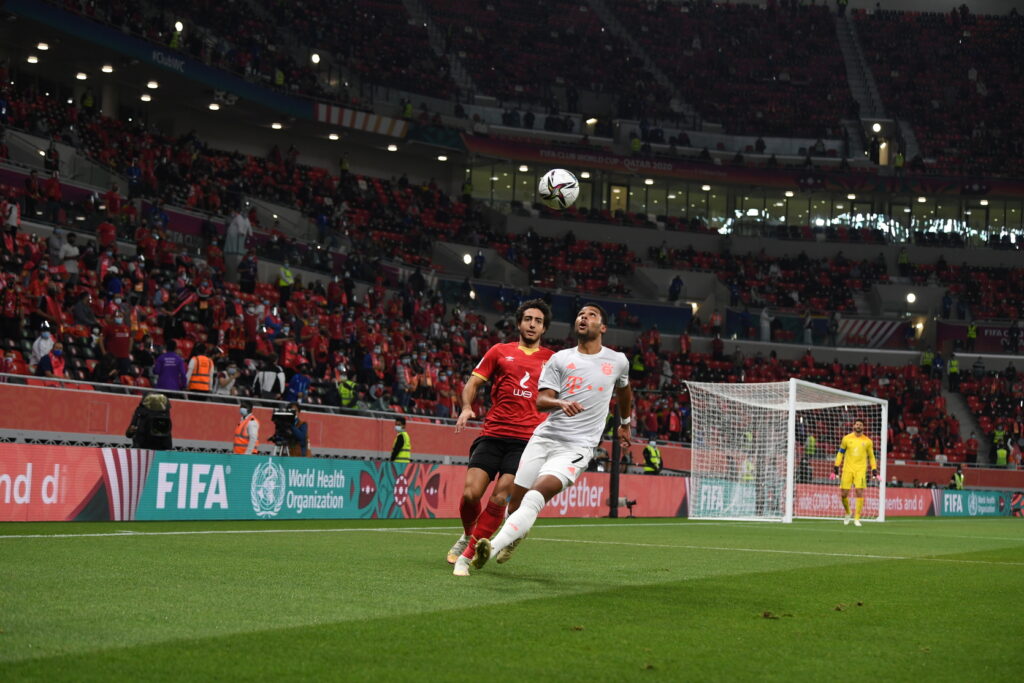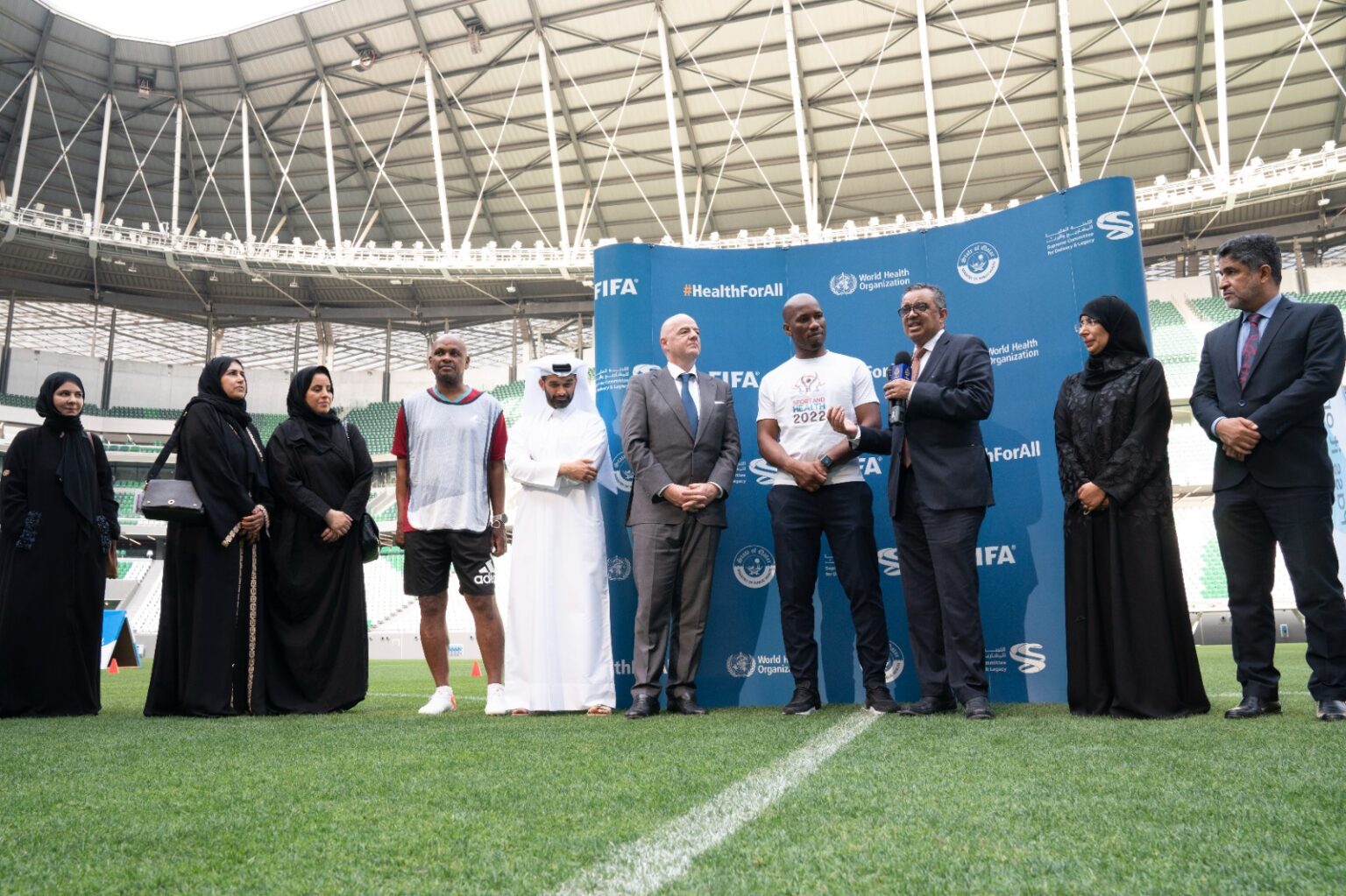In a powerful and forward-thinking collaboration, the State of Qatar and the World Health Organization (WHO) have created a new global blueprint for safer, healthier mega-sporting events. Their work, which focused around the FIFA World Cup Qatar 2022™, has been celebrated as a game-changing model that could influence how international sporting events are hosted for years to come.
This groundbreaking partnership wasn’t just about making a single sporting event safer. It was about creating long-term change—ensuring that the health and safety of fans, athletes, workers, and communities become a permanent part of sports planning worldwide.
Sport for Health: A Powerful Initiative
The “Sport for Health” initiative was born in 2021, when Qatar’s Ministry of Public Health joined hands with WHO, FIFA, and Qatar’s Supreme Committee for Delivery & Legacy. Their goal was bold but clear: to make the FIFA World Cup Qatar 2022™ the healthiest and safest global sporting event ever held.
This wasn’t just a public relations campaign. It was a deeply strategic, fully integrated health movement, combining world-class public health expertise with one of the world’s biggest sports platforms.
FIFA World Cup 2022: A Living Laboratory for Public Health
The FIFA World Cup 2022 provided the ideal setting to launch and test this health-first approach. With more than 1.4 million fans visiting Qatar during the tournament, the scale was massive—and so were the health risks and opportunities.
The organizers focused on multiple levels of health impact. From promoting healthy lifestyle habits to ensuring emergency preparedness, the event became a large-scale experiment in combining public health with public celebration.

Some of the standout actions taken included:
- Tobacco-Free Stadiums: All stadiums were smoke-free. This helped protect fans from second-hand smoke and encouraged more sporting events to go smoke-free in the future.
- Healthy Food Options: Food vendors were encouraged to offer healthier meals. Stadium menus included more fruits, vegetables, and plant-based options than ever before at a FIFA World Cup.
- Physical Activity Promotion: Public campaigns encouraged fans to walk or cycle to matches, and large open-air fitness zones were set up in public areas.
- Mental Health Awareness: Mental health support services were offered for attendees and workers alike. Stress-relieving activities and awareness campaigns aimed to reduce tournament-related anxiety and emotional fatigue.
From Risk to Resilience: Managing Health at Scale
Hosting a global sporting event during uncertain times posed a variety of challenges, especially in a post-pandemic world. But the partnership did more than just promote good habits—it also established strong systems for health protection.
Qatar and WHO worked closely to develop:
- Emergency response plans for disease outbreaks
- Protocols for crowd safety and extreme weather
- Standards for water and food hygiene in and around stadiums
- Training programs for staff and volunteers on public health safety
Their approach emphasized preparation, communication, and real-time monitoring. Public health experts worked hand-in-hand with event planners, showing how sports and science could work together at the highest levels.
A Lasting Legacy Beyond Football
What makes this partnership so significant is its long-term vision. Qatar and WHO didn’t just aim to protect people during one tournament—they wanted to spark global change. Their newly published report, titled “Changing the Game: Strengthening Health and Well-Being through Sport Events,” captures everything they learned from the World Cup experience.
This report is more than a summary—it’s a step-by-step guide for future hosts of mega-events. It outlines key recommendations, such as:
- Start Early: Health planning should begin from the earliest stages of event design.
- Collaborate Widely: Governments, health authorities, sports bodies, and communities must work together.
- Think Beyond the Stadium: Health promotion efforts should reach tourists, workers, and host communities.
- Create a Lasting Impact: Infrastructure, health programs, and behavior changes should continue after the event ends.
These recommendations are now being shared with countries and organizations preparing for other global events, such as the Olympic Games and the next FIFA World Cup.
Voices Behind the Vision
Qatar’s Minister of Public Health, Dr. Hanan Mohamed Al Kuwari, emphasized how sport can be a global tool for promoting good health.
She noted that hosting a mega-event like the World Cup was not just about football—it was about creating positive change in people’s lives. From encouraging more physical activity to addressing mental well-being, the tournament became a vehicle for health transformation.
WHO Director-General Dr. Tedros Adhanom Ghebreyesus praised the collaboration as an example of what’s possible when countries take a holistic view of health and sport. He said that the lessons from Qatar can now be used by other nations to bring people together safely and responsibly through sports.
The Broader Impact: Changing How the World Views Sports Events
Sports have always had the power to unite. But now, thanks to the Qatar-WHO partnership, they’re also seen as tools for better health. By merging health goals with sporting passion, this initiative has sparked a global conversation about how we can celebrate together without putting lives at risk.
The campaign proved that it’s possible to protect and promote health even at the largest, most complex events. The result was not only a successful World Cup—but also a healthier one.
Qatar’s experience has shown that health and happiness go hand-in-hand when it comes to sports. And this new model is already inspiring cities and countries preparing for their own major events. The hope is that the next generation of mega-events—whether in athletics, football, or other sports—will carry this health-first legacy forward.
Final Thoughts: A Model Worth Following
The partnership between Qatar and WHO didn’t just change one tournament—it may have changed the future of sports planning entirely.
By putting health at the heart of everything, the FIFA World Cup Qatar 2022™ proved that safety and celebration are not opposites—they are partners. It showed that when governments, health experts, and sports organizations work together, the results can be world-changing.
As countries prepare for future Olympics, World Cups, and other global gatherings, they now have a model that prioritizes well-being. Thanks to the leadership shown by Qatar and WHO, sports fans everywhere can look forward to not only exciting games—but also healthier experiences.
Virgin Australia Overhauls Board, Adds Global Aviation and Finance Heavyweights



